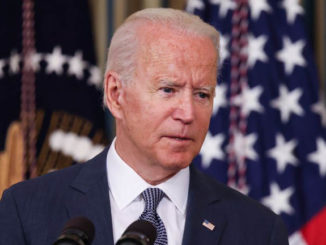

“When it comes to climate change, there is a chance to turn this trend, and for India, the largest country in the region sharing the most boundaries with other South Asian neighbors, to lead the way to find holistic solutions: accessing funding, tapping the latest climate adaptation technology, and finding cross-border markets for renewable energy networks. Mr. Modi’s “One Sun One World One Grid” and ‘Panchamrit plans’ would clearly pack more punch if they contain a clear road map for the region, and strive for a common South Asian taskforce to tackle the enormous challenge that lies ahead for India and its neighborhood this century.”
Over the course of four days, at the G20 in Rome and COP26 (the 2021 United Nations Climate Change Conference) in Glasgow, Scotland, Prime Minister Narendra Modi spoke at nearly a dozen events, expanding on India’s plans to counter climate change. India’s record since the 2015 Paris Accord and initiatives such as the International Solar Alliance (ISA) and Coalition for Disaster Resilient Infrastructure (CDRI), as a part of which Mr. Modi (along with other leaders) launched the ‘Infrastructure for Resilient Island States (IRIS)’ at the World Leaders Summit at COP26 were widely welcomed. The announcement of India’s new Nationally Determined Contributions (NDCs) and the “Panchamrit” or five goals for the future elicited applause from across the audience. Missing however, was any reference to India’s own region, the subcontinent, South Asia, without which India’s multiple forays on fighting climate change could well prove fruitless.
South Asia’s feeble voice
The absence of a South Asian initiative on climate change led by India, accrues to a number of obvious reasons: India-Pakistan tensions that have led to the degradation of the South Asian Association for Regional Cooperation (SAARC) process, especially since 2014, when the last SAARC summit was held; events in Afghanistan and the Taliban takeover which will bring it closer to its Central Asian rather than South Asian neighbors; the differences over pollution issues within the Bangladesh-Bhutan-India-Nepal (BBIN) grouping that has held up its initiatives like the common Motor Vehicle Agreement (due mainly to Bhutan’s opposition); and slow movement amongst the Bay of Bengal Initiative for Multi-Sectoral Technical and Economic Cooperation (BIMSTEC) countries along the Bay of Bengal that have yet to bring about a common charter at the global level despite adding climate change as an area of cooperation a decade ago.
Impact of Global Climate. What does it mean?
To begin with, regardless of relations between any of the countries in South Asia (India-Pakistan being the only notable rivalry), there is no question that this is a cohesive geographical unit that is sheltered by the Himalayas to the north, fed by its many glaciers in an intricate network of rivers that fall into the ocean, and buffeted by the same climate and monsoon conditions. Second, South Asia is slowly becoming the world’s biggest area of concern when it comes to climate change. According to this year’s Global Climate Risk Index, India and Afghanistan are among the top 10 countries worldwide in terms of vulnerability, but South Asia classifies for the overall lowest values. By one estimate, 20 out of 23 major cyclone disasters in the world in the past have occurred around the Bay of Bengal region, and global warming, coastal degradation and soil salinity as well as water scarcities cause the deaths of thousands in South Asia each year. The Asian Development Bank now predicts a decrease of 11% in South Asian GDPs by 2100 if “Business-As-Usual (BAU) Emissions” are maintained. With global warming and sea levels rising, other estimates predict there will be nearly 63 million climate migrants in South Asia by 2050 (Costs of Climate Inaction: Displacement and Distress Migration).
Second, all these grim figures build a logic for a combined push for global reparations and assistance for the entire region. As a part of the developing world, the Indian subcontinent is not responsible for the massive damage done to the environment already wrought by the developed world, and according to 2019 figures, no single regional bloc has lower per capita emissions than South Asia does.
Green potential
When New Delhi speaks of the need for climate justice, global funding and climate adaptation technology transfer, India’s voice would only be strengthened multiple times if it speaks for South Asia as a whole. According to the World Bank’s newly launched South Asia road map, climate-smart investment opportunities in South Asia total a whopping $3.4 trillion, with “energy-efficient green buildings” alone representing an investment potential of more than $1.5 trillion. Green transport connectivity and infrastructure, electric vehicles could represent another $950 billion in investment opportunities by 2030. This does not include the vast sums of funding available for cross-regional solar grids, windfarms and run-of-river energy projects.
Other drawbacks, China
However, while India and other countries in the region access global banks, including the BRICS-led New Development Bank (NDB), the Beijing-based Asian Infrastructure Investment Bank, and Asian Development Bank for projects individually, there is no single South Asian entity the banks could work with for a more targeted focus and more concessional financing for the problem that faces the region.
Third, growing carbon footprints as well as post-COVID-19 economic compulsions are driving countries into closer regional coalitions, looking for solutions closer home, than those provided by globalization and long-distance supply chains. South Asia has remained an exception, persistently showing lower inter-regional trade and connectivity, and lower levels of cooperation on migrant labor issues, inter-state tourism and cross-border employment than other regions. Finally, New Delhi has often warned of the pernicious influence of ‘Chinese solutions’ to problems in the subcontinent, ranging from unsustainable infrastructure financing to environmentally harmful projects as part of the Belt and Road Initiative (BRI), but it has been unable to proffer a viable alternative, with or without its Quad partners.
On certain issues, where India has failed, South Asian neighbors have learned to seek help from other international partners or even each other: when India stopped COVID-19 vaccine exports this year for example, Bhutan, which received vaccines from Denmark and a number of other countries including the United States and China after a desperate global appeal, in turn helped Nepal with stocks of AstraZeneca. When New Delhi failed to respond to Sri Lanka’s request for assistance with its currency and debt crisis last year, the Rajapaksa government turned to Bangladesh for a currency swap arrangement. The problems between India and Pakistan that have multiplied manifold in the past few years are no doubt a major obstacle, but not one that cannot be surmounted in the face of a common challenge, as the special SAARC conference on COVID-19 in March 2020 showed.
New Delhi can show the way
When it comes to climate change, there is a chance to turn this trend, and for India, the largest country in the region sharing the most boundaries with other South Asian neighbors, to lead the way to find holistic solutions: accessing funding, tapping the latest climate adaptation technology, and finding cross-border markets for renewable energy networks. Mr. Modi’s “One Sun One World One Grid” and ‘Panchamrit plans’ would clearly pack more punch if they contain a clear road map for the region, and strive for a common South Asian taskforce to tackle the enormous challenge that lies ahead for India and its neighborhood this century.
(The author is a senior columnist. She can be reached at suhasini.h@thehindu.co.in)





Be the first to comment